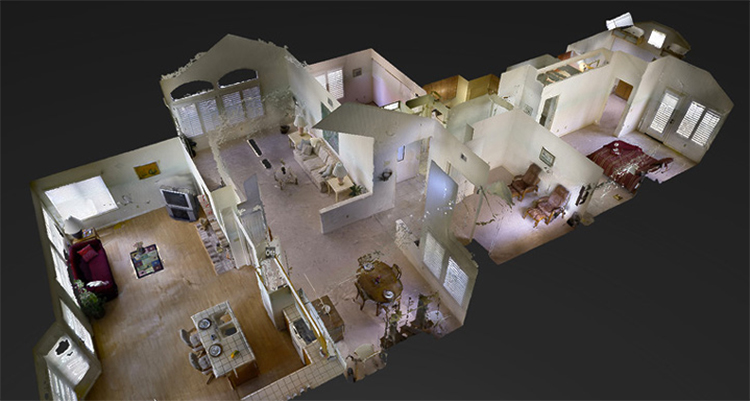While it might seem like a bad movie plot, websites that aren’t friendly to mobile devices are about to be in for a rude awakening. In late February, one of Google’s top webmasters announced in a blog post that the dominant search engine was about to make a significant change to the way it ranks search results. Beginning on April 21st, its search algorithm would increase the weight it gives when returning search results to what it called “mobile friendliness.” Not only does that mean that mobile-friendly websites would enjoy better results, it also means that sites that don’t meet those standards will face the consequences. Some have already dubbed it “Mobilegeddon.”
The stampede from desktops to the wide variety of shapes and sizes now available as tablets, cell phones and even wearables—think Apple Watch—that has taken place over the past several years is only getting larger. A recent survey by ComScore Networks—a firm that analyzes internet traffic and trends—found that in the final three months of last year, desktop searches in the U.S. decreased, while the searches with smartphones jumped 17 percent. The volume of tablet searches increased 28 percent.
And while many of our clients have made this shift to mobile friendly, they are in the minority. A survey by Didit.com took a look the sites of the largest companies to see if they have adopted a mobile-friendly approach. Didit looked at the home pages of publicly-traded companies on the Standard & Poor’s top 100 list by checking them against Google’s “mobile-friendly test page.” The result—some 25 percent of those home pages failed the test, including the Walt Disney Company, a brand that is typically at the forefront when it comes to leveraging technology for visitors to its theme parks.
The Disney home page looks great on a desktop. But as the screen size gets smaller on table and mobile devices, the Google tool found that the text was too small, the links overlapped each other and the content was often wider than the mobile screen.
We’ve been working with our clients for the past four years to make the move to responsive designs that automatically resize their user interface depending on the size of the display screen. A responsive site takes a standard website and instructs the mobile device on how to display it properly. Responsive websites can handle any resolution with changes in CSS files, which affect how the elements on Web pages are presented. Computers, laptops, smartphones, and tablets will all display the website in the best way possible.
One of the reasons responsive design is so important is the “fat finger” problem—as menus shrink, it becomes nearly impossible to engage the functionality since our fingers are too big. Responsive designs shift the menus from ones that are driven by discreet buttons to larger options that are easier to see and easier to select. Without this type of design, visitors will be frustrated and leave the site in search of one that is user friendly.
This approach insures that the website appropriately presents itself on every size display, from the smallest to the largest. Another approach is to have a separate mobile website. Yet, since new devices in different sizes seem to hit the stores about every 10 minutes, this could be a large problem for websites, and certainly would not be cost-effective.
To put this in perspective, while this is a significant move by Google, it doesn’t mean you have to panic. Some of us have been advising our clients for several years that more and more users are accessing their websites via tablet and mobile devices. Google is simply responding to the shifting trends of how consumers are accessing the web. It will not unduly penalize a website that doesn’t immediately meet its requirements like it did in previous search changes—you can still make the move to a mobile-friendly site and see your rankings adjust accordingly. And if you haven’t been paying attention to the marketplace and to the shifting needs of your audiences, you may have a bigger problem than Mobilegeddon.
Working at a Washington DC digital agency that works with brands spanning the largest, most cautious Fortune 500 companies to the most speedy of start-ups disrupting every corner of Earth, we need to back up our creative and marketing recommendations with stats. Here are some that stats could arm you in your next planning phase, ranging from user experience design to marketing promotion and branding.
WHO ARE YOU BROWSING FOR?
The latest stats are in from the US Government on Browser and device usage. Plan your next website user experience design based on these stats as well as the stats from your analytic application.
WHAT DID THAT ICON SAY?
According to ScienceDaily’s recent study, Icons need to tell something very clearly or face horrible usability issues with your user experience.
The recent report asked users to look at an icon and try to avoid thinking of both the word of that image, as well as how many letters that word had (for example, a subject is told to look at a iPhone and not think “iPhone” or think “6,” the number of letters in the word). Nearly 80% of people could not stop themselves from “sub-speaking” the word in their head and only 50% could stop themselves from saying the number of letters in the word. Stopping the brain from making associations in the subconscious is nearly impossible, which makes it extremely important to ensure that visual icons and representations are completely recognizable and aren’t easily confused by the user to have another meaning.
Placement of icons should not just be for visual effect. It can actually aid your user without making them think at all. It’s important that you choose the right icons as well, because you don’t want to trigger an automatic association from your user about something unrelated to the purpose of the icon.
DO YOU PERSUADE WITH VIDEO?
A recent User Experience Dynamic study by SearchEngineWatch shows that 73% of people will convert to the sites desired action when they enhance their user experience design with video.
HAVE YOU JOURNEYED BELOW THE FOLD?
Countless recent studies are showing that almost every user (yup over 99%!) these days are scrolling below the fold. Be adventurous and think of the user experience taking place on a tall dynamic canvas.
GOT SHARES?
Facebook continues to be the most widely used social channel for sharing. It gained 8.2% share and made up 81% of all shares in Q4. Sharing activity by email also increased, but it still only represents about 1% of total share volume. Looking at the channel distribution of sharing on mobile, Facebook edges out the competition even further. Facebook activity jumped 51% from last year and now represents 85% of mobile sharing activity. Pinterest and Twitter have also gained traction on mobile.
Force 3 is one of the fastest growing network security services and solutions company servicing the Federal Government with revenues of more than one billion dollars annually. When it’s brand, messaging and website needed an update it turned to Bluetext. We added a fresh set of colors and a new design with the sensation of motion to the logo, a theme that plays out across the website. We also created an animated introduction that uses the color palette to draw the visitor into the site.
The new website is infused with search engine optimization so that Force 3 comes up when customers are searching for network security solutions. One of the company’s key differentiators is the expertise and passion of its team of experts. That message is persistent across the site.
The imagery is clean and modern on each page.The new brand design plays out not only on the website, but in collateral, iconography, and a new trade show booth. It delivers a brand that is in tune with today’s government customer and differentiates their offering and value from competitors.
When it was announced that Reston-based Maximus Inc. signed a definitive agreement to buy Acentia for $300 million, I must admit I got a little teary eyed.
Acentia (formerly called ITSolutions) selected Bluetext following a very competitive search to do a full rebranding effort, from name to logo to corporate identity to messaging to website to videos to launch, etc.
Todd’s challenge was hefty – he had to unify a brand across nine diverse companies (not an uncommon issue in Federal Contracting) to create a brand that would enable his company to be acquisitive and get in the game as a mid-size contractor.
This was one of our first major rebranding assignments since founding Bluetext and turned out to be an incredible project for us, working with Todd Stottlemyer and his entire management team.
If you have ever had a chance to work with Todd, his passion and commitment to excellence are second to none, and he pushed us to create work which we are still proud of today.
We spent weeks developing a name and message that not only was powerful but truly reflected the focus on his people. When the tagline was selected, Essential to the Mission, it became a rallying cry that pulled together employees, created a sense of purpose for the company and its brand, and became the theme for the company’s first advertising campaign we developed which highlighted historic people like Jackie Robinson and Clara Barton who were essential to their mission.
As my partner Jason Siegel pointed out to me last night, this is first company we named as Bluetext that is now off the market. It is a great feeling for our entire team knowing that our efforts helped them achieve their goals. Here is a link to a testimonial from Todd following the successful rebrand effort – http://bluetext.com/acentia-ceo-todd-stottlemyer-on-bluetext/
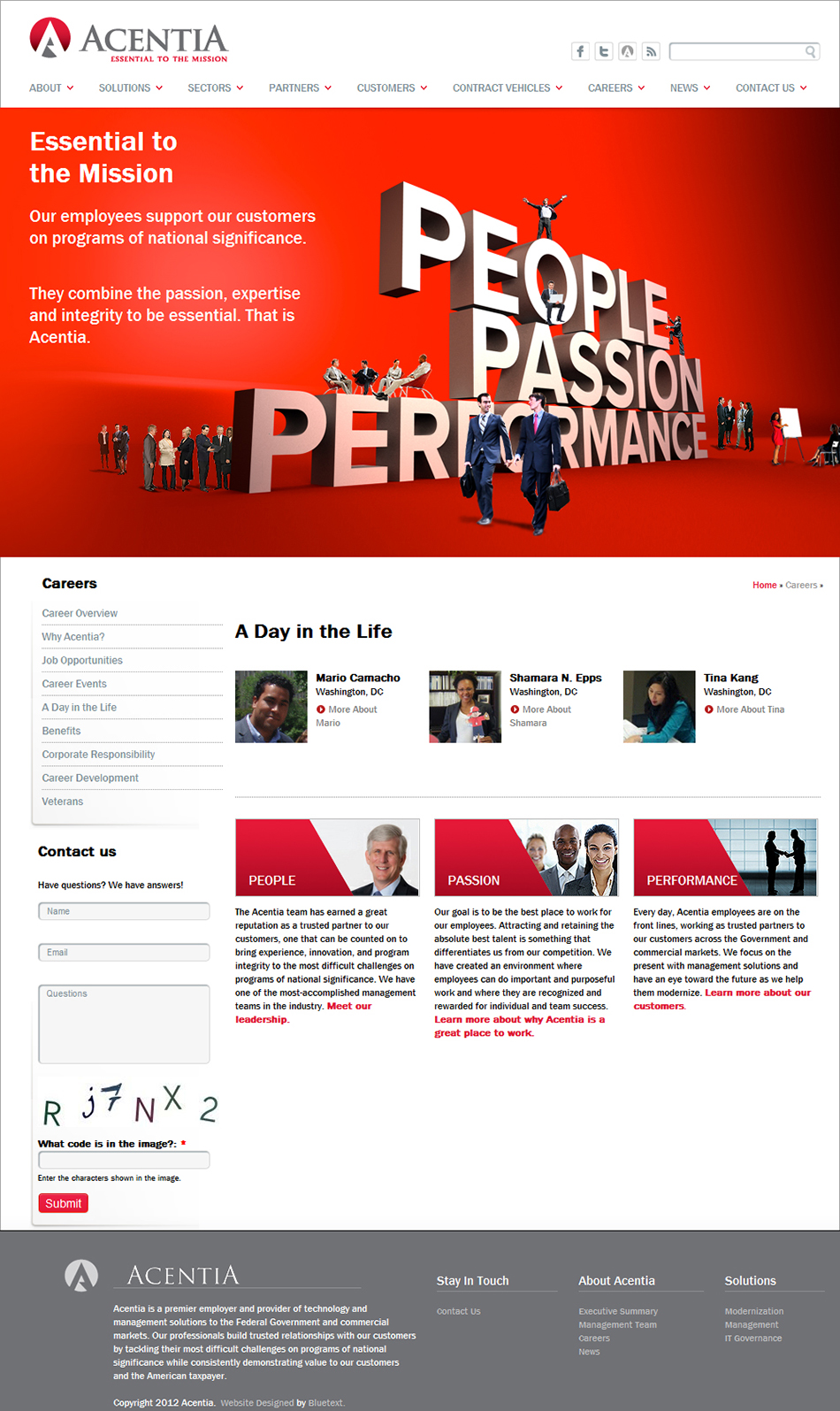
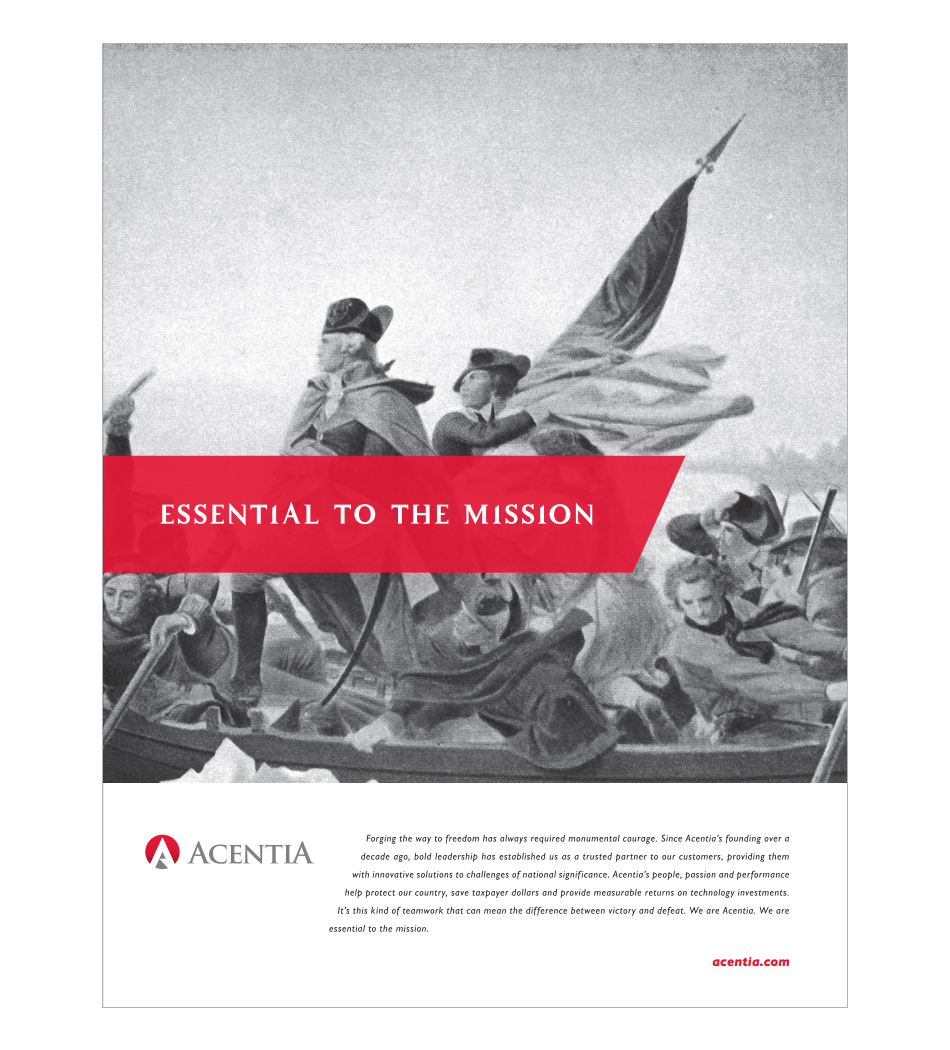
Trade associations that represent the interests of and provide services for their members, be they large companies and organizations or individuals, all face the challenge of retaining their current members every year, growing their member base and reaching non-members who may be involved in the policy or business arenas. Competition among associations is fierce. Even without competitive pressures, it’s not always easy to convince individuals, organizations, small business or large corporations to devote resources and pay fees to an industry association year-after-year. They not only have to see the value, they need to feel part of the group and believe that it is looking out for their interests and providing them the services they want.
With industry associations as with other organizations, the website is the hub of activity for members and others who want to know about the group and its issues. Too often, the hub is ignored because it’s not viewed as central to the mission of the group. We think a strong website is essential, because that is the first place that any target audience is going to look for information. Bluetext has helped dozens of industry and membership organizations leverage their web presence to better recruit and retain their members, grow their revenues and maintain a close relationship with their constituents. Here are our top five tips:
Make It Engaging. Compelling website design and graphics are extremely important to reach those key audiences and to keep them interacting with the site. First impressions are important, and if the design doesn’t resonate, the visitor may leave quickly without engaging. A tired or out-of-date design signals that the association may not have the resources or digital savvy to have a modern and fresh look and feel. The design should also allow the visitor to find a wide range of information that spans their interests. Visitors come to association sites not to purchase a specific product, but to learn about a variety of topics, policy issues, and services that are relevant to them. Burying that information under layers of tabs may lose the target audience. A responsive design is a must, as more and more individuals are accessing the sites through mobile and tablet devices. We also recommend longer scrolls as visitors swipe to navigate the screen, rather than waiting for a new page to refresh as they move about the site.
Make It Personal. This should be fairly obvious, but it is surprising how many membership organizations and trade groups fail to highlight their own members. Why is this important? Because individuals need to be able to relate to the other people in the organization, to understand the types of people who are also part of the group and what value they get from their dues. Not only does this draw in new members, but it also serves to “humanize” the organization by putting faces and stories on what otherwise might seem like a faceless group.
We recommend setting up a section on the website that is full of videos and scrapbook-type photos of members and their families. For Forest America, which represents the nation’s private forest owners, we set up a section called “Caretakers” on its website, with profiles of dozens of landowners and their families who are part of the organization. To capture the footage, we take a video crew to their annual meetings and film them during breaks telling their stories—with other family members at their side. We add in photos that they send us and any other materials that help tell a personal story. The Caretakers section serves three important functions:
1) It shows visitors to the site, including policymakers and other organizations, the human faces that comprise the organization;
2) It helps with recruitment, as other private forest landowners see that they can be part of the team; and
3) It energizes current members, who love to see their colleagues and friends—and their own families—in a scrapbook setting.
Give Them The Tools They Need. Members are busy, so any shortcuts that make their lives easier are welcome. For the Society of Human Resource Management, a membership organization that includes thousands of human resources executives, retention was suffering due to the economic downturn. HR directors needed an easy way to convince their CEOs that membership in SHRM paid valuable dividends in training and resources for their annual fees. Rather than their typical request for approval, which might be shuffled to the bottom of the in-box, we built a tool for members that with just a little bit of information would create a compelling brief presentation to be send to their top executives. The deck, which explains the value of joining or renewing their membership, was far more likely to get the attention and approval of the boss. After launching the new tool, SHRM saw its renewals increase dramatically.
Make It Easy. Not only do members appreciate better tools, they need easy ways to take action and interact with the organization. Having persistent Calls-To-Action across every page of the site is essential to get the type of engagement that demonstrates value for the organization. In some cases, those Calls-To-Action can be as simple as “Join Now.” But for advocacy sites, having a sophisticated application built-in that can send a tailored email or letter to a Member of Congress or a regulatory agency serves many purposes.
First and foremost, individuals will contact policymakers only if it’s a relatively simple process. Most do not have the time to write a note to their Congressmen, nor do they know the issues well-enough. In addition, they might have no idea how to find the right policy-maker and obtain their email or physical address. We have installed a number of effective applications for associations that take the burden off of the member. By filling out, for example, their zip code, these tools can auto-populate a letter with the correct Member of Congress and address, and offer a “Mad Lib” draft where certain fields can easily be completed.
Build In Engagement. There are excellent new tools to engage visitors to the site. The first is obvious: Make social sharing persistent on every page and section of the site. Whenever a visitor sees anything they like—a position paper, an infographic, a video or a blog post—encourage them to push that around to their larger network.
Another tool that we have implemented in a number of sites is a Tweet-Builder—a tool that poses a topic and then invites the visit to complete a tweet, with recommended hashtags that can be included. That tweet then goes in real-time into the associations Twitter Stream.
The benefits of this tool are that it encourages the visitor to participate while helping to populate the social media arena. It also gives an incentive for that person to follow the group on social media, and to broadcast posts out to their larger community.
A third tool that we implemented is a polling functionality—that poses questions on the site in the form of polling questions, and then displays the results on that same page. Designed to resemble a Pinterest Page, polling tools invite participation and give the visitor a reason to keep coming back to the site. This is one that we built for a media company that publishes a variety of sportsmen-focused magazines.
Bloomberg BNA is one of top providers of legal information for attorneys, ranging from court decisions and legal filings to law review articles and news coverage that can affect a company or case. Bloomberg saw a huge opportunity to reach in-house counsel at companies and organizations where litigation, intellectual property, transactions and compliance are managed internally. It needed a dynamic campaign to reach those target attorneys with a good reason why they should add Bloomberg BNA tools to their arsenal.
Bluetext designed a campaign micro-site that begins with a live-action video with six individual personas, representing six use cases, so that target visitors could select the example that most closely matches their own responsibilities. Once the individual is selected, the visitor is taken to a page that provides in-depth details about that particular offering including examples and screen shots.
The site serves as its own segmentation filter, placing targets more directly into the best lead nurture channel. Calls-To-Action are prominent across every page to make it simple to download a whitepaper or infographic, sign up for a relevant newsletter, request a free trial or to learn more. The campaign included a direct mail piece with graphics and designs that match the site.
CITRIX TAKES ON ITS COMPETITION
When Citrix wanted to go after its competitor VMware head-on, Bluetext designed a gamificiation experience that pitted the two contenders against each other. The teaser video features the training regime of a real world champion fighter, and leads to an interactive rock-em, sock-em fighters game with the Citrix kid taking on Victor Machismo– and winning of course. Key messages fill the screen with every punch.
Real Estate marketing is a fast-paced and ever changing target, and we often see big trends come and go in how websites are designs. Many of the real estate centric web design trends we’ve seen in the last few years are still around, and more new trends are emerging in 2016.
Here are 5 trends that will likely dominate the best real estate websites in 2016:
Stick with Sticky
Fixed or “sticky” navigation bars are a prevalent trend in some of the most shockingly beautiful sites across the web. These benignly set bars allow for ease of access to a website’s core functionalities, regardless of where a user may be in the midst of a page’s content.
Some pro’s for going with a sticky interface:
• Advantages in usability
• Speed up your customer journey
• All the cool brands are doing it – its white hot
Real estate companies like HomeAway.com and Kangaroom.net are doing this very well. With users needing to recall all their search parameters and being able to easily toggle from map view to list view, Real Estate is one of the best vertical markets that can benefit its digital experiences by adding sticky interface elements.
Hamburgers Attack
We have all seen the hamburger icon. As a matter of fact most of us probably use it on a daily basis. It has become a staple in website and app design. I’m even looking at it now on the top right corner of Google Chrome.
Real estate sites continue to attack their interface design projects with hamburgers. Why? Because hamburgers are the most minimal interface you could have. And that means more screen real estate for those great real estate images and videos.
Where are you with Wearables?
Wearable Technology is the latest “next big thing” and its main focus is making life simpler.
Wearable technology will redefine the world. The shift to the proliferation of mobile devices meant that many new design principles had to be created and learned. The same will apply with Wearables, so don’t get left behind!
All websites for real estate companies should look at their responsive website design deliverables and add wearable browsers to the list of deliverables you would like to see your website looking optimized for.
Suggest “Search Suggest”
As digital advertising costs continue to rocket, having consumers search on your website instead of Trulia, zillow, redfine, etc is more important than ever.
If you’re optimizing your site aggressively that should be accompanied by a search centric homepage and general interface design.
The old adage was you want less clicks to the most critical conversion points. How about ZERO clicks. Search should be up front and center and EVERYWHERE.
On top of being search centric, you should streamline even further with a multi data point search suggest experience. In that magic AJAX powered fly out you should have closest geographic matches which have accompanying information like real time pricing and inventory, and other compelling content.
3D Virtual Tours
Companies like Matterport have introduced a ground-breaking technology for real estate – 3D Experiences assembled from still photography. Think Google Street View for your interior home tours. Create a realistic and immersive online experience covering the entire interior of any home. Captivate Buyers and impress Sellers with this innovative technology.
With 3D Experiences, companies like Matterport are revolutionizing how brokerages and agents showcase homes. A special camera rotating 360 degrees and controlled by an iPad is placed in multiple locations in every room in the home. The image data is then uploaded to a cloud server, and then you have a captivating 3D model of the entire home is ready for viewing. Embed this model directly into your Virtual Tours so Buyers can experience the 3D tour everywhere your content goes, be it your corporate website, MRIS, Realtor.com, your Broker site, your realtors site, Zillow, Trulia, RedFin and many more. A great company for capturing Matterports are HomeVisit.
What’s more valuable to a company? A visitor to its website who spends 15 minutes scanning a wide variety of pages, or a visitor who comes and goes in three minutes? The obvious answer is the first one, because as any marketing executive can tell you, “stickiness” and time on site are drivers for the website experience. But what if the first person is taking so long because they can’t find what they are looking for and the second person came and left quickly because they readily found the white paper they wanted or even transacted? The lesson here is not that time on site isn’t the only metric you should be evaluating. In fact, using metrics to evaluate the performance of your site may not be as straightforward as it looks.
Take the recent news about Instagram over-taking Twitter in terms of volume last year. “Instagram Is Now Bigger Than Twitter” was the headline everywhere from CNBC to Re/Code to the New York Times. But how meaningful is that comparison? Twitter has some 284 million active monthly users, Instagram more than 300 million. Yet, as an article in Slate describes it, the two are different: “One is largely private, the other largely public. One focuses on photos, the other on ideas. They’re both very large, and they’re both growing.”
Another metric that is often bandied about is unique monthly visitors. This measures the number of people that come to a site and discounts repeat visitors. Again, that might sound like the ultimate metric for evaluating the attention that a site is getting. Still, it doesn’t measure what those unique visitors are doing on the site. If it is a content-driven website, like the Huffington Post or Buzzfeed, a more important measure may be “total time reading.” There, the number of visitors who come and leave quickly isn’t very valuable to advertisers who provide the revenue for content-driven sites. Total time reading is far more important, and smart advertisers recognize the difference and factor that in accordingly.
A common measure reported on widely in the media when comparing different brands’ web traffic is the number of website visitors. This is frequently sourced to web measurement and analysis companies who make these types of evaluations. But even these can be highly misleading. First and foremost, according to a recent post in medium.com, the most widely quoted source of web traffic, Comscore Networks, only counts U.S. users. If a brand is global or operates overseas like a many government defense contractors, the metrics will not include that traffic in the totals. In addition, these reports are often based on sampling which can distort the actual numbers for smaller brands with a more limited number of visitors. It’s also not yet clear whether these services are including site traffic from mobile apps, which may be a very important measurement tool for many websites as more and more visitors use mobile devices to access information on the web.
So if the three most commonly-used metrics for measuring the success of a website—time on site, unique monthly visitors, and total traffic—all have their flaws, what is the best way to evaluate how a site is doing?
The answer is there is no best answer. All three of those key metrics are useful, but they need to be taken for what they are which is a set of imprecise and blunt tools.
A better way to look at the most effective mix of metrics is to find the best blend that will help evaluate “value.” Time on site is important, but only as an element in value. In reality, for media websites, advertisers don’t actually want a customer’s time, they want to make an impression that will lead to a transaction or buying decision. On the other hand, for an enterprise site offering IT solutions where the buying cycle is long and a visit to the website may be part of the research process, time is valuable as a measurement for a customer’s information gathering step in the cycle. Where they go on the site—to resources, for example—may say a great deal about where that customer is in the cycle and how to best to pursue him or her.
Where the visitor enters the site may be a key performance indicator for both organic search results or for a lead-generation driven campaign that takes the visitor directly to the intended content. Spending time on the blog page may be an indicator that the site’s content is fresh and engaging and is bringing target audiences back for more. Reading product and solutions pages may indicate a prospect that needs to be watched to make sure they are getting what they need to make a purchasing decision.
The right answer is that value has to be a combination of a number of factors, and using multiple metrics can help understand if the site is achieving its goal of providing that value. But no marketer should get too hung up on any single measurement.
Content management systems (CMS) are a dime a dozen and selecting the right solution for your next website can be challenging. They have become a commodity and being able to objectively evaluate one versus another is hard. All of them do the same thing and when you’re done you will have a fully functional website that will hopefully serve your needs. What sets them apart are their processes. Specifically, how they empower you and your team to build and maintain your website. It’s these differences like licensing, installation, front-end coding, content construction, user management, extension and maintenance that you should focus on when comparing one system with another.
In this post we’ll use these factors to investigate the differences between two popular content management systems on the market today: ExpressionEngine and WordPress.
Licensing
Before wading in to the features and how-to’s of each system you first need to look at their licensing. Are they open source or propriety? If open source, what license do they use? Any commercial limitations? If proprietary, do you have access to the source code? Are there ongoing expenses beyond the initial licensing fee? How much does it cost? It’s important to answer these questions first and make sure the answers jive with your organizations’ rules and regulations before deciding to move ahead with any particular system. You have access to the full source code and there are no ongoing licensing costs or restrictions.
WordPress is one of the most, if not the most, popular CMSs on the market today due in large part to its open source license. Users are free to use and/or modify WordPress for any personal or commercial project without restriction. ExpressionEngine is built on LAMP technologies, just like WordPress, but is closed source and propriety. Users can purchase it for a one-time fee but will need to ensure they continue to use it within any requisite license restrictions.
Installation
Before you can start using either CMS you first need to install them on your server and run any necessary updates. WordPress and ExpressionEngine are both very straightforward and simple to install. WordPress has its famous “5-minute install” process as well as plenty of automated install options offered by hosting providers. ExpressionEngine’s install process doesn’t get as much hype, or have as many automated options, but it is equally straightforward to get up and running. The primary difference is that WordPress requires less IT support and resources where ExpressionEngine will likely require a helping hand from IT to get up and running.
Front-end Coding
When it comes to writing the HTML, CSS and JavaScript of your site, content management systems offer two clear options: those that are theme based and those that are template based. Theme based CMSs, like WordPress, are more plug-and-play and modularized. You can easily purchase pre-made designs and be up and running in a matter of minutes. Template based CMSs, like ExpressionEngine, provide developers with easier workflows and lower learning curves but are not as modular, making it more difficult to find available plug-and-play front-end components. This is important to consider when determining what kinds of internal technology resources you will have to work on your project. It is important to ask yourself which will they be more comfortable working with?
Content Construction
How does the CMS manage the content? All systems tend to work off a content categorization concept that closely resembles the information architecture of your website. Meaning that if your site has a news section, you will likely have a news content type or category where all content matching that footprint should be placed. Out of the box, WordPress provides two content types: posts and pages. Posts are meant for “dynamic content” or content where content will be added or changed often and pages are for “static content” which doesn’t change. ExpressionEngine provides a different set-up out of the box, allowing administrators to create their own completely custom content types in the admin area which tends to keep things a little more organized and straightforward for website managers.
It’s worth mentioning that WordPress allows for the creation of custom post types, which creates a very similar kind of workflow to ExpressionEngines. However, this functionality needs to either be defined within the theme (by a developer) for each post type or enabled by installing a plug-in which allows administrators to create custom post types and fields through the control panel.
User Management
Will visitors be able to register for an account on your website? Manage a profile or configure account settings? These are common features on a lot of websites today and using a CMS that provides a framework for this out of the box can save time and money. Both WordPress and ExpressionEngine have user registration capabilities but offer different levels of configuration. WordPress’ approach is limited out of the box requiring users to use the CMS log-in screen, not providing much in the way of user profiles or other capabilities. ExpressionEngines user management functionality is extensive and highly customizable, allowing administrators to create custom profile fields, custom log-in pages/workflows and additional advanced features.
Extension
Your website is unique and as such will likely require whatever CMS you choose to be modified slightly to fit your needs. Can this be done easily or will developers have to hack in to the core code of the system causing all sorts of headaches in the future? Both WordPress and ExpressionEngine provide robust extension options empowering developers to modify both front-end and control panel look, feed and functionality. WordPress plug-ins can be written to change everything from the CMS log-in process to how content is passed to the front-end of your site independently from the core code. Same for ExpressionEngine, where developers have the option of developing modules, plug-ins, extensions, accessories or field types without interfering with the core system code.
Maintenance
You should always be keeping the concept of maintenance, as in “how much will this solution cost to maintain?”, in the back of your mind. Beyond the strictly financial cost there is also staff time and required skill level to consider as well. It’s very important that your CMS be updated and maintained on a regular basis to keep your website secure and ensure everything is working correctly. WordPress has the clear upper hand when it comes to updates and maintenance as it’s largely automated. The system will, from time to time, automatically install minor updates to ensure your install remains current. But other major updates can be completed with one click and little to no IT intervention. ExpressionEngines update process is much more traditional and requires IT intervention throughout.
Picking a content management system today is hard. Trying to filter through the marketing lingo and hype to find the right solution for your organization is difficult but extremely important. The next time you find yourself in the CMS isle of the Internet superstore try using some of the above criteria to help you choose the right software for your project.
Need help with a content management or other digital marketing project. Please contact us.


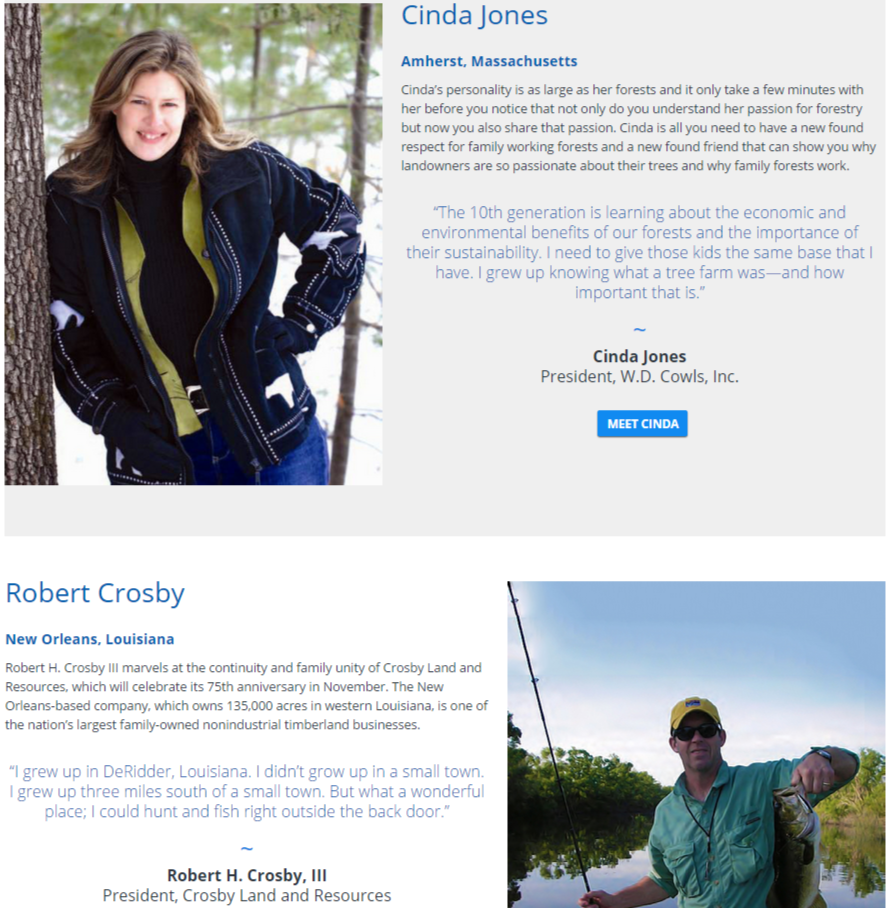
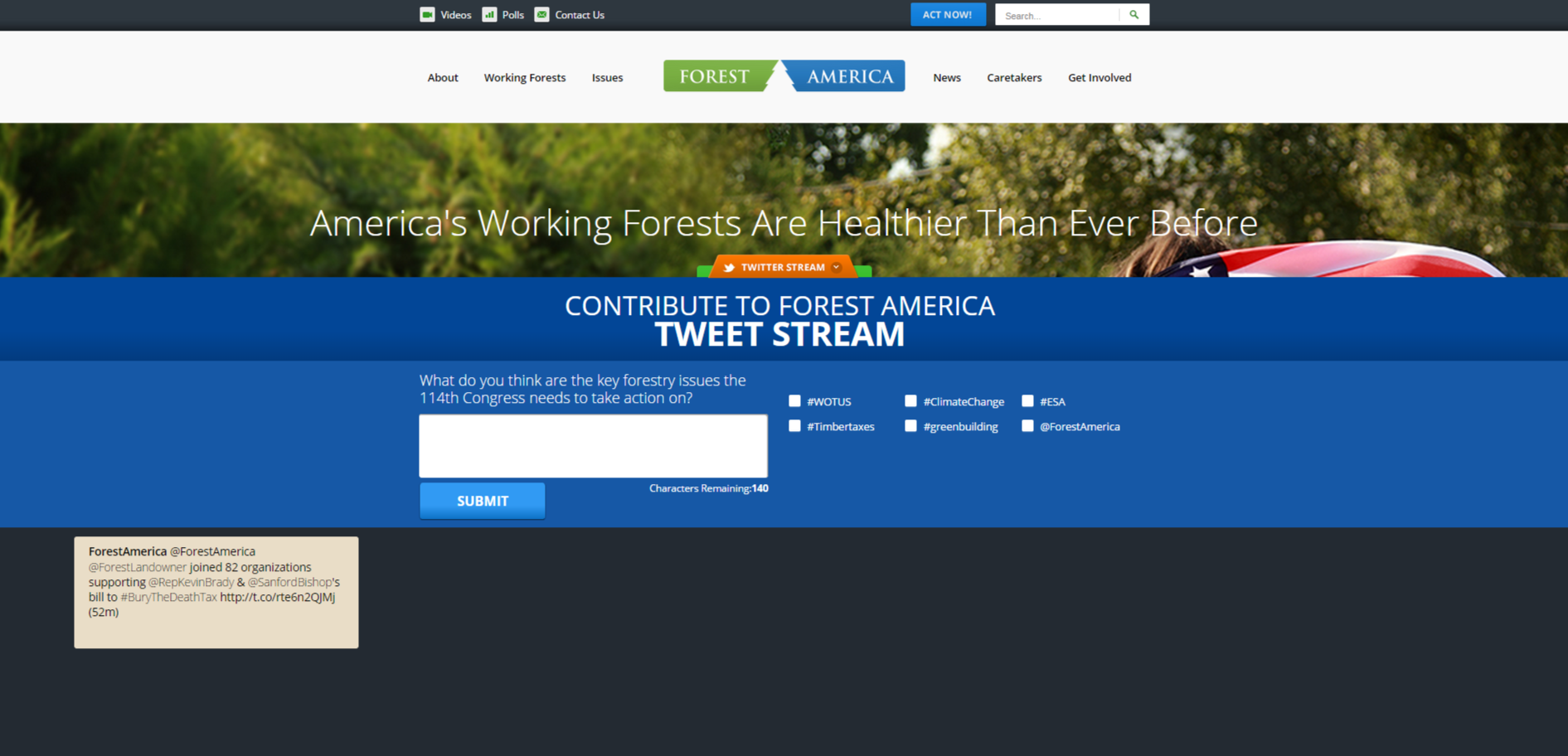
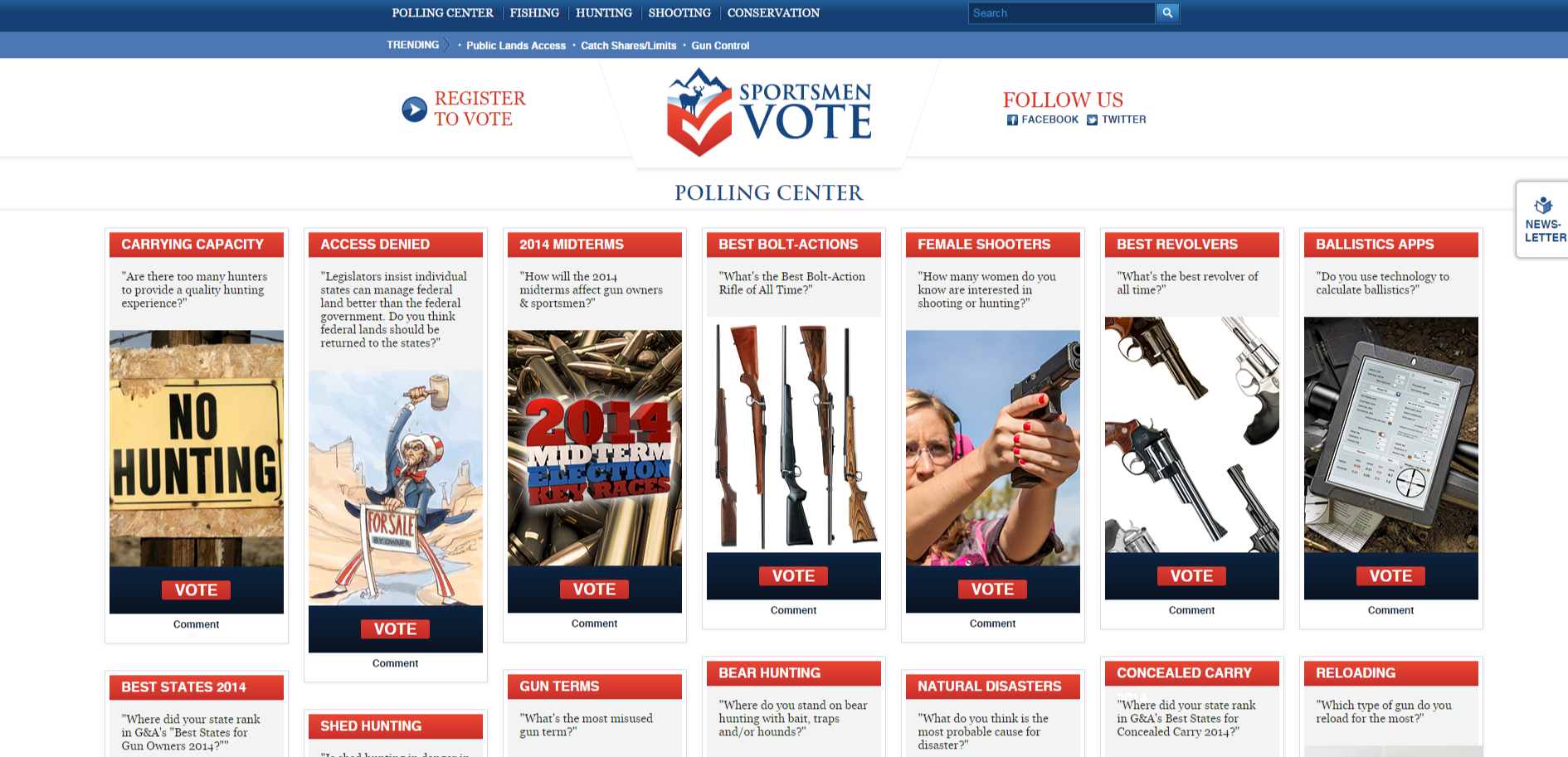
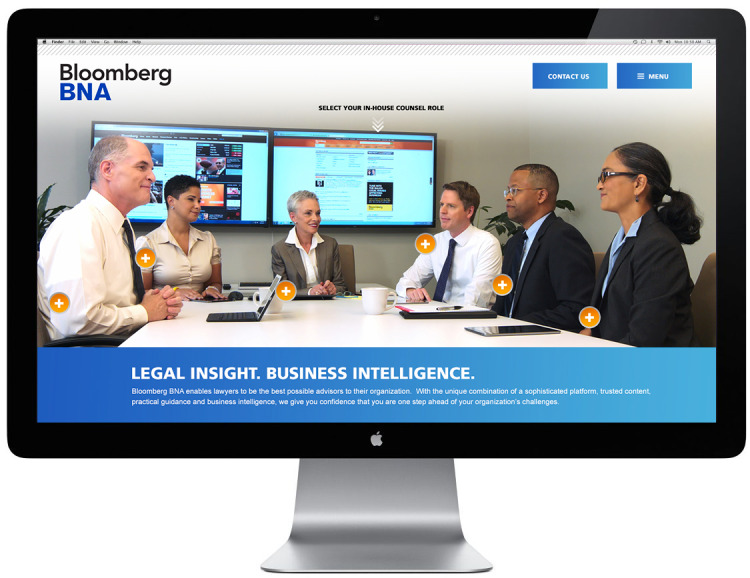
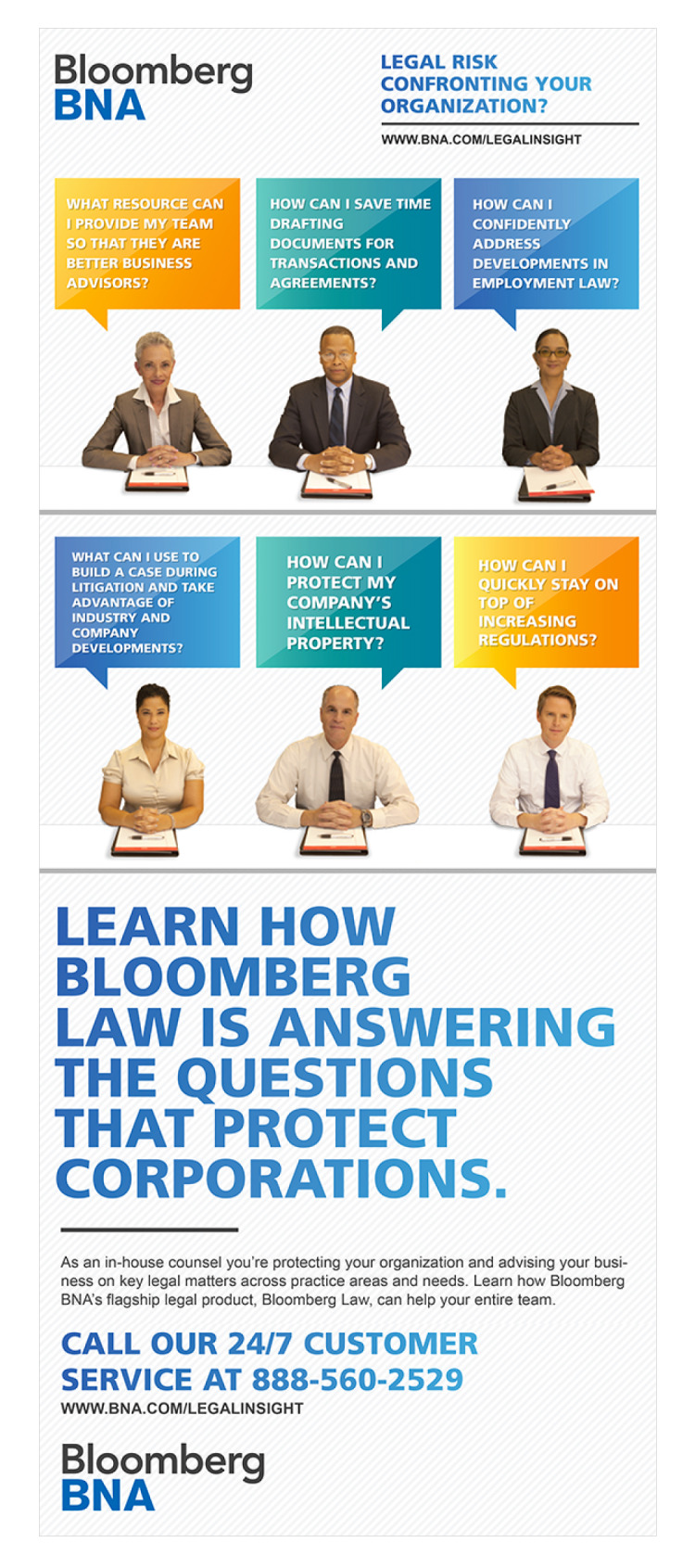

![citrixcollage[1]](https://bluetext.com/wp-content/uploads/2022/09/citrixcollage1.jpg)
![citrix1[1]](https://bluetext.com/wp-content/uploads/2022/09/citrix11.jpg)


